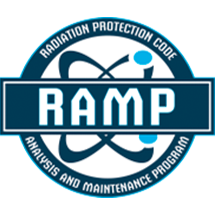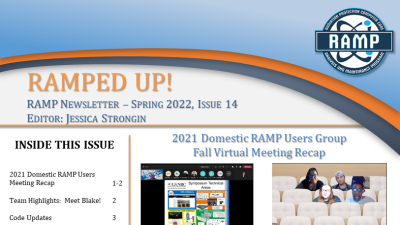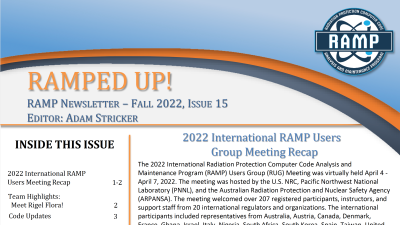RAMPED UP - March 2022
Domestic webinar recap, team highlights, code updates, international meeting updates
RAMPED UP - November 2022
Recap of 2022 Intl. RAMP User Group Meeting. Introducing the SIERRA code and other news.
RAMPED UP - September 2024
Recap of 2024 Intl. RAMP User Group Meeting. Introducing a new version of VARSKIN+, the SIERRA ATD module, the planned update to the RASCAL GUI, and other news.
VARSKIN+ v1.3 Released
This new version incorporates and updates the Radiological Toolbox (RadToolbox). Updates to the calculations for the SkinDose and WoundDose modules are included. VARSKIN+ now available in German, Korean, and Akan languages.



